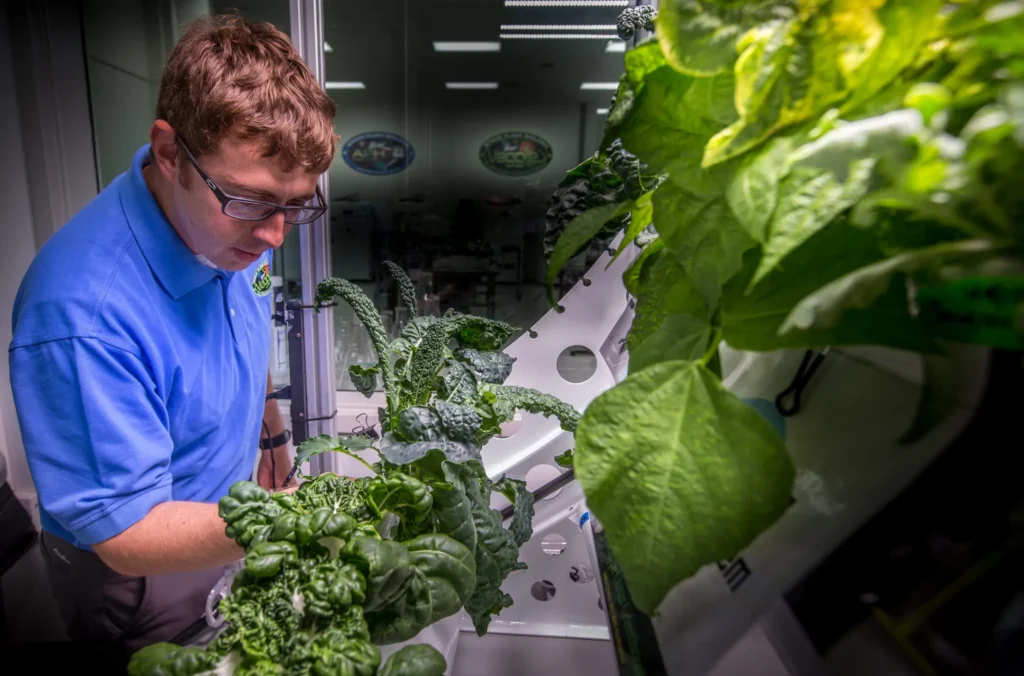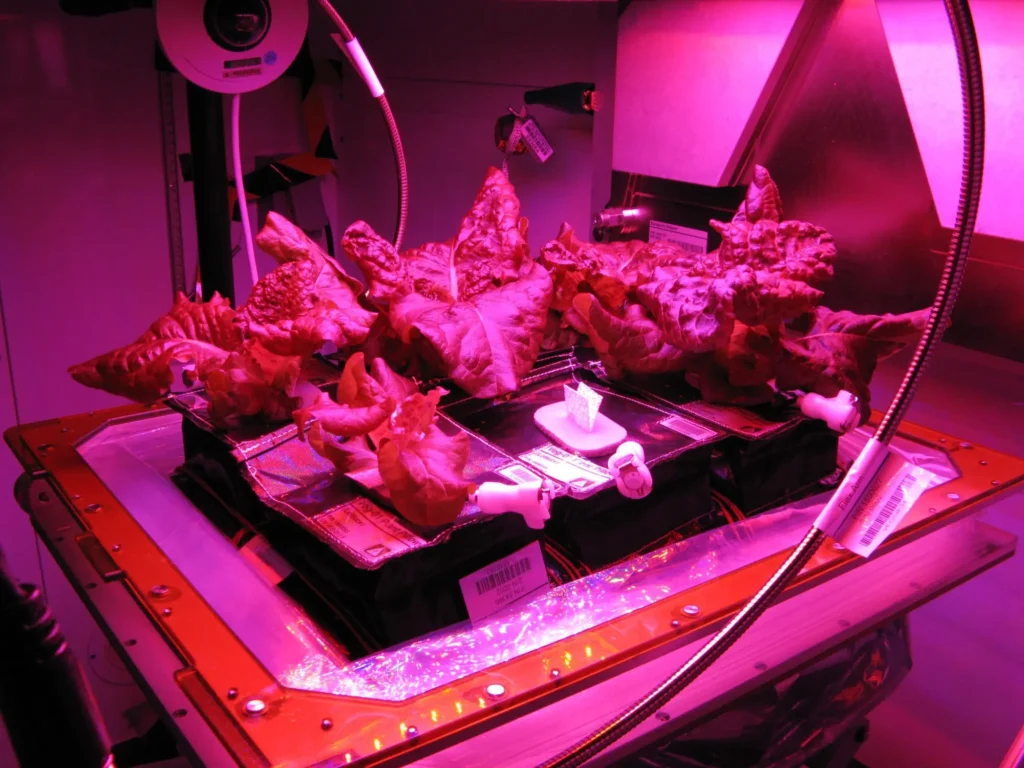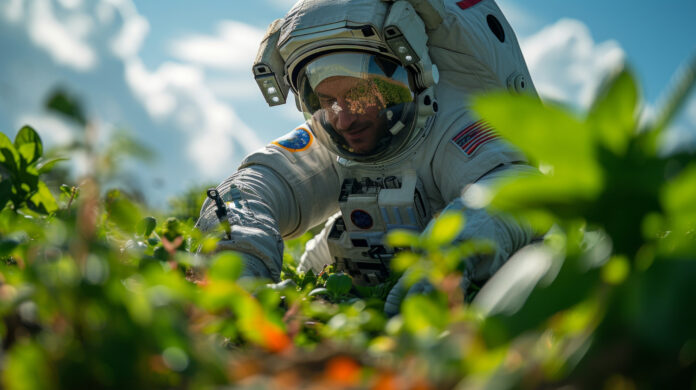Ever wondered how we’ll feed future space explorers? On the Moon? On Mars? Maybe even deeper into the cosmos? The answer lies in space farming. It’s also known as astroagriculture. This isn’t science fiction anymore. Scientists are making it a reality. So, let’s explore this exciting field. But first, let’s answer a burning question:
What Exactly Is Space Farming?
Space farming is the practice of cultivating crops and raising animals for food and other materials outside of Earth’s atmosphere. It’s like traditional agriculture, but in the extreme environment of space. Imagine greenhouses on the Moon or Mars, filled with leafy greens, tomatoes, and maybe even potatoes. That’s the vision of space farming.
But why go through all this trouble? Why not just bring food from Earth?
Who Invented Space Farming? A Look Back at the Pioneers
This concept isn’t new. Early 20th-century thinkers like Konstantin Tsiolkovsky, a Soviet rocket scientist, envisioned greenhouses in space. These would provide food and oxygen for space travelers. By the 1950s, the US Air Force and NASA started developing algae-based life support systems. These early ideas laid the groundwork for modern space farming research.
Why Space Farming?

Why is space farming a big deal? Imagine you’re an astronaut. You’re millions of miles from Earth. You crave a fresh salad. Or maybe a juicy tomato. Space farming is the solution. It’s not just about delicious food. It offers many advantages.
This means fewer resupply missions from Earth. These missions are expensive and slow. Growing food in space enables longer, more sustainable space exploration. It also means fresher food for astronauts. Currently, they rely on pre-packaged meals. These have limited shelf life. Space-grown produce would be like a farmer’s market in space!
There’s more. These systems can recycle water and waste. This is crucial in space’s limited resources. Additionally, studying how plants grow in space can lead to new discoveries. This could improve agriculture on Earth too.
Cosmic Challenges of Space Farming
Space farming isn’t easy. It presents unique challenges. One major issue is microgravity. Plants are used to Earth’s gravity. They get confused in space’s weightlessness. This affects their growth, water absorption, and nutrient distribution. Scientists use hydroponics and aeroponics to help. These methods don’t need soil.
Another challenge is cosmic radiation. This radiation is harmful to plants. Scientists use shielding and genetic engineering to protect crops. Lastly, resources are limited in space. Water, energy, and nutrients are scarce. Space farmers must be very efficient.
How Does Space Farming Work? A Galactic Gardening Manual
So, how does space farming work? Let’s break it down. First, seeds are carefully selected. They’re placed in special containers designed for space. Most systems use hydroponics or aeroponics. These methods don’t require soil. They’re efficient in space.
Plants need light. There’s no sunlight in space, so LED lights are used. These are energy-efficient and adjustable. They provide the light plants need. Plants also need water and nutrients. They get these through their roots in hydroponics or their leaves in aeroponics.
Space farmers must control the environment. They maintain the right temperature and humidity. This is done inside the growing chamber. Once plants are grown, astronauts can harvest them. They get to enjoy fresh, space-grown produce!
Space Farming Success Stories and Lessons Learned

Space farming isn’t just theoretical. Many initiatives have successfully grown plants in space.
- The Veggie System on the ISS: Astronauts on the International Space Station (ISS) have grown lettuce, radishes, and other greens using the Veggie system. This has provided valuable insights into plant growth in microgravity.
- The Advanced Plant Habitat (APH): The APH on the ISS allows for more complex experiments. It helps scientists understand how different light and CO2 levels affect plant growth.
- Lunar and Martian Experiments: Ongoing experiments are exploring the possibility of growing crops on the Moon and Mars using local soil.
These missions have shown us that space farming is possible. But they’ve also highlighted the challenges. We’ve learned that microgravity and radiation can affect plant growth. We’ve also learned the importance of efficient resource use.
Conclusion
We’ve explored what Space Farming is, why it matters, and the hurdles it faces. We’ve dug into the methods used, the ongoing experiments, and the lessons we’ve learned along the way. The potential benefits extend far beyond providing fresh food for astronauts—they could transform space exploration, scientific research, and even agriculture here on Earth. The challenges are real, but the potential rewards are astronomical.
Want to learn more about this fascinating field? Dive deeper into the research. Follow the latest space missions here on the space vortex. Maybe even try your hand at growing your own food using hydroponics or aeroponics – a little taste of space farming right in your home. Who knows, you might be the next person to innovate in this exciting frontier! Also share this post to your family and friends if you found it interesting, would also love to know your thoughts on the future of space farming the comments section below.
